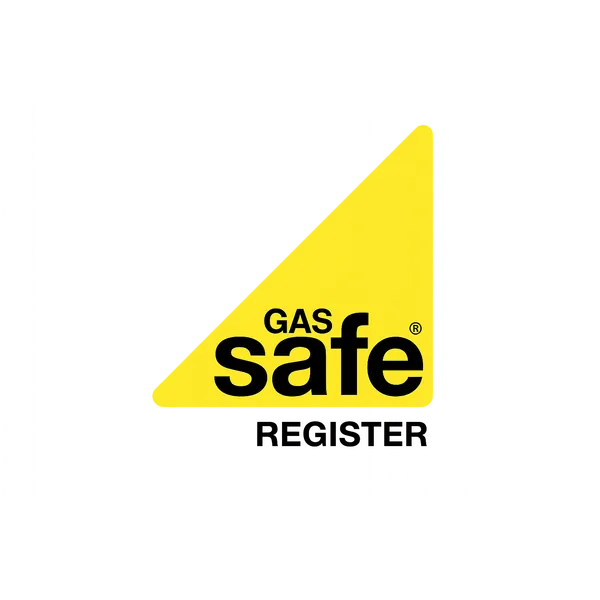From EPC to Action Plan: Making Sense of Your Energy Survey
When it comes to understanding your property's energy performance, many UK homeowners and landlords start with an Energy Performance Certificate (EPC). While EPCs provide a useful baseline, they often leave property owners with more questions than answers. What does that 'D' rating really mean? Which improvements should you prioritise? And how can you translate that certificate into a practical, cost-effective action plan?
The Limitations of Standard EPC Assessments
EPCs serve an important regulatory purpose, providing a standardised rating system that allows for comparison between properties. However, their limitations become apparent when you need detailed, actionable guidance for improvement.
Standardised Assumptions vs Real-World Performance
EPC assessments rely on standardised assumptions about property usage and occupant behaviour. They don't account for:
- Actual heating patterns - How you really use your heating system
- Specific occupancy - The number of people actually living in the property
- Local microclimates - How your specific location affects energy performance
- Building quirks - Unique architectural features or historical modifications
The 'Recommendations' Conundrum
EPC recommendations are often generic and lack prioritisation. You might receive suggestions like "install loft insulation" or "upgrade to double glazing" without understanding:
- Which improvements will deliver the biggest energy savings
- The actual cost versus benefit of each measure
- How different improvements interact with each other
- The practical feasibility of implementation
How Professional Energy Surveys Go Deeper
Professional energy surveys bridge the gap between basic EPC ratings and actionable improvement plans. These comprehensive assessments provide the detailed insights needed to make informed decisions about your property's energy efficiency.
Comprehensive Data Collection
Unlike standard EPC assessments, professional surveys incorporate:
- Detailed thermal imaging to identify hidden heat loss areas
- Air tightness testing to measure infiltration rates
- Moisture mapping to detect potential damp issues
- Building fabric analysis assessing insulation quality and continuity
- Heating system performance evaluation beyond basic efficiency ratings
Occupant-Centric Analysis
Professional surveys consider how you actually use your property:
- Lifestyle patterns - When and how you heat different spaces
- Comfort requirements - Your specific temperature preferences
- Future plans - Any planned renovations or extensions
- Budget constraints - Your available investment capacity
Interpreting Thermal Imaging: Beyond the Pretty Pictures
Thermal imaging has become a cornerstone of professional energy surveys, but understanding what those colourful images actually mean requires expert interpretation.
Reading the Heat Signature
Thermal cameras detect surface temperatures, revealing patterns that indicate:
- Thermal bridging - Areas where heat escapes through structural elements
- Insulation gaps - Missing or poorly installed insulation
- Air leakage - Drafts and infiltration points
- Moisture issues - Damp areas that affect thermal performance
Common Thermal Patterns and Their Meanings
- Blue/purple areas - Typically indicate cold spots, potentially showing heat loss or damp issues
- Red/orange areas - Usually show heat sources or areas of excessive heat retention
- Uneven patterns - Suggest inconsistent insulation or thermal bridging
- Linear cold spots - Often indicate missing insulation around joists or structural elements
It's crucial to remember that thermal images alone don't tell the whole story. Professional surveyors combine thermal data with visual inspection, moisture readings, and building knowledge to provide accurate diagnoses.
Prioritising Recommendations by Return on Investment
One of the most valuable aspects of a professional energy survey is the ability to prioritise improvements based on actual return on investment (ROI). This approach ensures you focus your resources where they'll deliver the greatest benefit.
Calculating True ROI
Professional surveys calculate ROI considering:
- Upfront costs - Materials, labour, and any associated expenses
- Energy savings - Projected reduction in heating and electricity bills
- Maintenance savings - Reduced repair and replacement costs
- Comfort improvements - Enhanced living conditions and property value
- Government incentives - Available grants, loans, or tax benefits
The Improvement Hierarchy
Typically, energy efficiency improvements follow a logical hierarchy:
Quick Wins (High ROI, Low Cost)
- Draught proofing - Sealing gaps around windows, doors, and pipework
- Heating controls - Installing programmable thermostats and smart controls
- LED lighting - Replacing inefficient bulbs throughout the property
- Hot water insulation - Lagging pipes and upgrading cylinder insulation
Medium-Term Investments (Good ROI, Moderate Cost)
- Loft insulation - Upgrading to recommended thickness (270mm+)
- Cavity wall insulation - For suitable properties with unfilled cavities
- Heating system upgrades - Replacing old boilers with modern condensing units
- Secondary glazing - Where full window replacement isn't feasible
Long-Term Strategic Improvements (Variable ROI, Higher Cost)
- Solid wall insulation - External or internal insulation systems
- Renewable energy systems - Solar panels, heat pumps, or biomass
- Whole-house ventilation - Mechanical ventilation with heat recovery
- Complete window replacement - High-performance glazing systems
CRG Direct's Actionable Roadmap Approach
At CRG Direct, we've developed a structured approach to transforming energy survey data into practical, phased action plans that deliver measurable results.
Phase 1: Comprehensive Assessment
Our process begins with a thorough evaluation of your property's current performance:
- EPC analysis - Understanding the baseline and identifying gaps
- Thermal survey - Detailed heat loss mapping and pattern analysis
- Building performance testing - Air tightness, moisture levels, and insulation checks
- Occupant consultation - Understanding your specific needs and constraints
Phase 2: Data Synthesis and Analysis
We combine all collected data to create a holistic understanding of your property:
- Energy modelling - Simulating different improvement scenarios
- Cost-benefit analysis - Calculating ROI for each potential measure
- Interdependency mapping - Understanding how improvements affect each other
- Regulatory compliance check - Ensuring all work meets current standards
Phase 3: Phased Implementation Plan
Rather than presenting a overwhelming list of recommendations, we create a structured timeline:
Immediate Actions (0-3 months)
Quick, low-cost improvements that deliver immediate benefits and help fund future work through energy savings.
Medium-Term Projects (3-12 months)
Strategic improvements that build on initial successes and prepare for larger investments.
Long-Term Vision (1-3 years)
Major upgrades that transform your property's energy performance and comfort levels.
Phase 4: Ongoing Support and Monitoring
Our relationship doesn't end with the survey report. We provide:
- Implementation support - Helping you find qualified contractors
- Progress tracking - Monitoring energy savings and comfort improvements n- Adaptive planning - Adjusting recommendations based on actual results
- Future-proofing advice - Preparing for emerging technologies and regulations
Making the Transition from Assessment to Action
The journey from EPC rating to comprehensive action plan represents a fundamental shift in how we approach property energy efficiency. It's about moving from generic recommendations to personalised strategies, from theoretical ratings to practical improvements, and from compliance-driven assessments to value-focused investments.
The Value of Professional Guidance
Working with experienced energy survey professionals provides:
- Contextual understanding - How your specific property performs in real-world conditions
- Technical expertise - Knowledge of building physics and modern solutions
- Practical experience - Understanding what works (and what doesn't) in similar properties
- Financial insight - Realistic cost estimates and funding opportunities
Building Your Energy Efficiency Journey
Every property improvement journey is unique, but successful projects typically share common characteristics:
- Start with understanding - Comprehensive assessment before making decisions
- Focus on fundamentals - Address basic issues before considering advanced solutions
- Plan for phasing - Break large projects into manageable stages
- Measure results - Track energy use and comfort improvements
- Stay adaptable - Be ready to adjust plans based on experience and new opportunities
Your Next Steps Towards Energy Efficiency
If you're ready to move beyond basic EPC ratings and create a truly effective energy improvement strategy, the first step is understanding your property's actual performance. A professional energy survey provides the foundation for informed decision-making and strategic investment in your property's future.
At CRG Direct, we specialise in transforming complex energy data into clear, actionable roadmaps that deliver real results. Our approach combines technical expertise with practical understanding of UK property challenges, ensuring you receive recommendations that work in the real world.
Ready to transform your EPC rating into an actionable improvement plan? Contact our energy survey team today to schedule your comprehensive property assessment and start your journey toward better energy performance, enhanced comfort, and reduced running costs.















